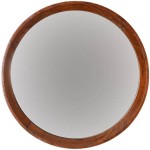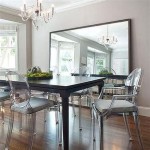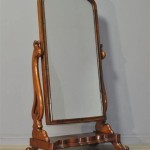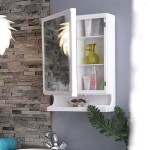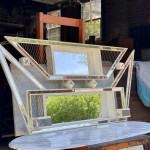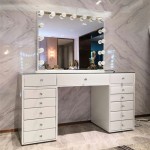Should a Mirror Be Centered on the Wall or the Couch? Understanding Interior Design Principles
The strategic placement of mirrors in interior design offers myriad benefits, from enhancing natural light to creating the illusion of increased space. However, determining the optimal positioning of a mirror, particularly its relationship to surrounding furniture like a sofa, frequently poses a design challenge. The question of whether a mirror should be centered on the wall or aligned with the couch below requires a nuanced understanding of several key principles, including architectural context, aesthetic balance, and functional considerations.
The concept of centering, whether referring to a wall or a piece of furniture, is intrinsically linked to the pursuit of visual harmony. Centering a mirror on a wall often appeals to a sense of symmetry and order. It can create a focal point, drawing the eye and establishing a sense of stability within the room. This approach is particularly effective in rooms with strong architectural features that warrant highlighting, such as a fireplace or a prominent window. Conversely, centering a mirror above a sofa may better integrate the mirror with the furniture arrangement, creating a cohesive and unified design scheme.
Ultimately, there is no single, definitive answer to the question of whether to center a mirror on the wall or the couch. The ideal placement depends entirely on the specific characteristics of the room, the style of the furniture, and the desired aesthetic effect. A careful evaluation of these factors is crucial for achieving a balanced and visually appealing interior.
Architectural Considerations: Identifying Focal Points and Spatial Dynamics
Before considering the placement of a mirror, it is essential to analyze the architectural features of the room. Identify existing focal points, such as fireplaces, windows, or built-in shelving. These features often dictate the natural flow of the room and can influence the optimal placement of decorative elements like mirrors. If the wall above the sofa contains a prominent architectural feature located off-center, centering the mirror on the wall may create an imbalance and draw attention to the asymmetry. In such cases, aligning the mirror with the couch may be a more effective strategy for achieving visual harmony.
The size and shape of the room also play a significant role. In a narrow room, a large mirror placed horizontally can visually widen the space. Centering this mirror on the wall, regardless of the couch's position, can maximize its effect. However, in a larger, more open room, the placement of the mirror should be carefully considered in relation to the furniture arrangement to avoid creating a feeling of emptiness or detachment.
The height of the ceiling is another factor to consider. In rooms with low ceilings, a tall, vertically oriented mirror can create the illusion of greater height. Centering this mirror on the wall can emphasize its verticality and enhance the sense of spaciousness. Conversely, in rooms with high ceilings, a wider, horizontally oriented mirror may be more appropriate, and its placement should be determined based on its relationship to the furniture and the overall design scheme.
Furthermore, the presence of windows and the direction of natural light should be taken into account. Positioning a mirror opposite a window can amplify the amount of daylight entering the room, making it feel brighter and more inviting. In these situations, centering the mirror on the wall may be less important than optimizing its placement to capture and reflect natural light. However, be mindful of potential glare and reflections that could disrupt the visual comfort of the space.
Aesthetic Balance: Achieving Visual Harmony and Cohesion
Achieving aesthetic balance is a cornerstone of effective interior design. The placement of a mirror, whether centered on the wall or the couch, directly contributes to the overall visual harmony of a room. When considering the placement of a mirror above a sofa, it is essential to assess the proportions of both the mirror and the sofa. A mirror that is too small in relation to the sofa may appear insignificant and lost, while a mirror that is too large may overwhelm the space and create a sense of imbalance.
As a general guideline, the width of the mirror should be approximately two-thirds to three-quarters the width of the sofa. This proportion creates a visually pleasing relationship between the two elements. The height of the mirror should also be considered in relation to the height of the ceiling and the overall scale of the room. A tall mirror in a room with low ceilings may feel disproportionate, while a short mirror in a room with high ceilings may appear diminutive.
The style of the mirror and the sofa should also be complementary. A modern, minimalist sofa may pair well with a sleek, frameless mirror, while a more traditional, ornate sofa may be better suited to a mirror with an elaborate frame. Consider the materials, colors, and textures of both the mirror and the sofa to ensure that they harmonize with each other and with the overall design scheme of the room. Contrasting styles can be effective if done intentionally, but should be carefully planned to avoid clashing or creating a sense of visual dissonance.
The surrounding décor also influences the perceived balance. For example, the presence of artwork, lamps, or other decorative objects on either side of the mirror can affect its perceived weight and balance. A mirror that is centered on the wall but flanked by unevenly sized or positioned objects may appear off-center. Consider the visual weight of these surrounding elements and adjust the placement of the mirror accordingly to achieve a balanced composition.
Functional Considerations: Optimizing Light and Space
Beyond aesthetic considerations, the placement of a mirror should also serve a functional purpose. Mirrors are not merely decorative elements; they can significantly impact the perceived size and brightness of a room. Optimizing the placement of a mirror to maximize its functional benefits requires careful consideration of the room's layout, lighting conditions, and intended use.
As previously mentioned, placing a mirror opposite a window can significantly enhance the amount of natural light entering the room. This is particularly beneficial in rooms that are naturally dark or lack sufficient windows. The reflected light can brighten the space, making it feel more open and inviting. However, it is important to consider the direction of sunlight and the potential for glare. Mirrors positioned in direct sunlight may create uncomfortable reflections that disrupt the visual comfort of the room. To mitigate this issue, consider using blinds or curtains to control the amount of sunlight entering the room or positioning the mirror slightly off-axis to avoid direct reflections.
Mirrors can also be used to create the illusion of increased space. A large mirror placed on a wall can visually expand the room, making it feel larger and more open. This is particularly effective in small apartments or rooms with limited square footage. When using mirrors to create the illusion of space, it is important to avoid cluttering the area in front of the mirror. A cluttered reflection can negate the effect of spaciousness and make the room feel even smaller.
The height at which the mirror is hung can also affect its functional impact. Mirrors that are hung too low may not reflect enough light or create a significant sense of spaciousness, while mirrors that are hung too high may be difficult to see and feel disconnected from the furniture arrangement. As a general guideline, the center of the mirror should be approximately eye level. This ensures that the mirror is both functional and visually appealing.
Finally, consider the specific use of the room when determining the placement of a mirror. In a living room, a mirror may be primarily used as a decorative element to enhance the aesthetic appeal of the space. In a bedroom, a full-length mirror may be more functional, providing a convenient place to check one's appearance. In a hallway, a mirror can serve both decorative and functional purposes, brightening the space and providing a quick glimpse before leaving the house. The specific needs of the room should inform the placement of the mirror to ensure that it is both visually appealing and practically useful.

Horizontal And Vertical Mirror Neutypechic

Off Center Mirror With Art

9 Round Mirrors Maggie Holmes Photography And Scrapbooking Blog

54 Sophisticated Mirror Gallery Walls Shelterness

Discover Here The Do S And Dont Of Wall Mirrors Decor

Our Living Room Makeover Is Complete Willow Street Interiors

8 Mirrored Wall Panel Designs To Enhance Your Living Space

Modern Mirrors Contemporary Neutypechic

38987 By Uma Brown Dried Plant Tribal Inspired Sunburst Grass Room Wall Mirror With Coiled Rope Center 45 X 2 De Cor Furniture

80 Gorgeous Living Room Decorating Ideas For Every Style

